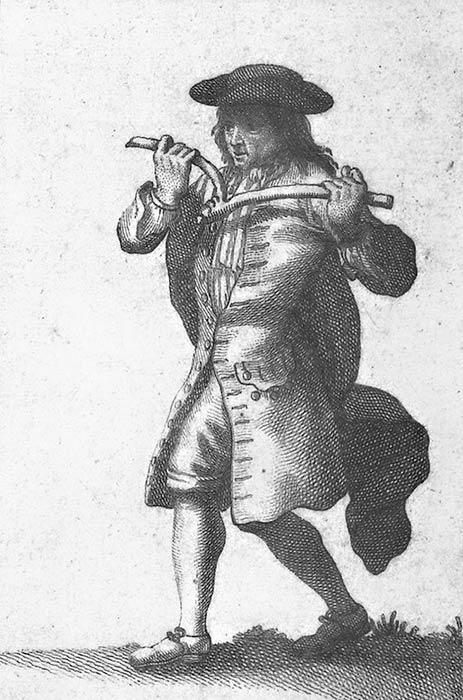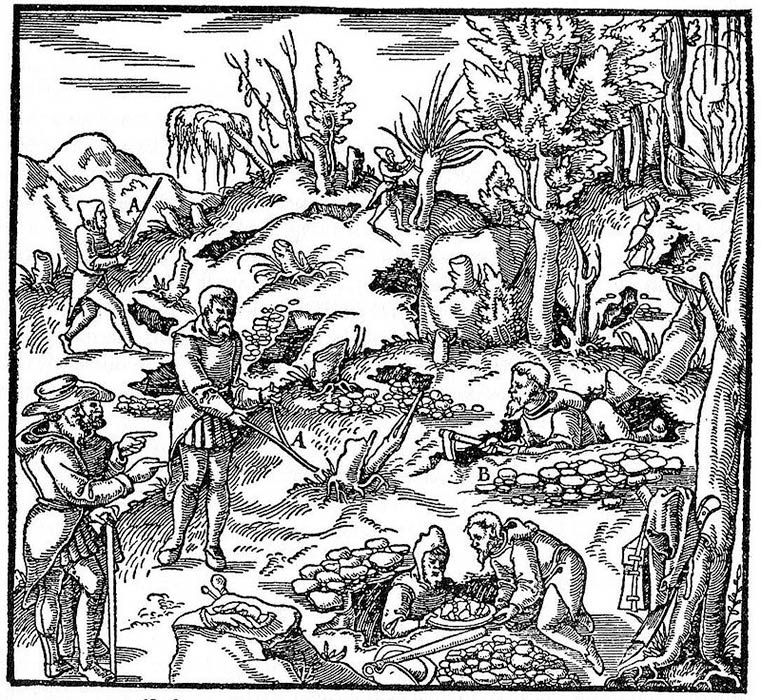
Reviving The Ancient Intuitive Skill of Dowsing
Mankind’s ancient ancestors faced many challenges, for instance the need to be able to find drinkable water that did not show on the surface of the land. Many of these challenges were solved by way of the ancient practice of dowsing. Some writers believe that the one human figure in cave paintings at Lascaux, France, is shown dowsing with a stick but this assertion is speculative since no one really knows how to interpret these ancient drawings. A more reliable indication of the antiquity of dowsing with a rod is the persistence of these practices among the Arunta, an indigenous tribe of central Australia.

A dowser, from an 18th-century French book about superstitions (Public Domain)
Historical References To Dowsing
An example of ancient dowsing is found in the book of Numbers in the Hebrew bible (Numbers 20:2-11), when God instructs Moses on the technique of dowsing with a rod: “Now there was no water for the congregation; so, they gathered together against Moses and Aaron. And the people contended with Moses and spoke, saying: “If only we had died when our brethren died before the Lord! Why have you brought up the assembly of the Lord into this wilderness, that we and our animals should die here? And why have you made us come up out of Egypt, to bring us to this evil place? It is not a place of grain or figs or vines or pomegranates; nor is there any water to drink.” So Moses and Aaron went from the presence of the assembly to the door of the tabernacle of meeting, and they fell on their faces. And the glory of the Lord appeared to them.
Then the Lord spoke to Moses, saying, “Take the rod; you and your brother Aaron gather the congregation together. Speak to the rock before their eyes, and it will yield its water; thus you shall bring water for them out of the rock, and give drink to the congregation and their animals.” So Moses took the rod from before the Lord as He commanded him.
And Moses and Aaron gathered the assembly together before the rock; and he said to them, “Hear now, you rebels! Must we bring water for you out of this rock?” Then Moses lifted his hand and struck the rock twice with his rod; and water came out abundantly, and the congregation and their animals drank.”

Dowsing for metal ore, from 1556 "De Re Metallica libri XII" book. (Public Domain)
Perhaps the first modern depiction of dowsing with a forked stick is in an illustration in Georgius Agricola´s 1530 treatise on mining, De Re Metallica (On Metals). This book contains a woodcut of two dowsers with forked sticks standing above several mines in which men are removing ore. Agricola asserted that there was a power in the veins of metals that would cause a rod to turn. Others maintained that if the power resided in the veins of metal themselves, then it should be able to cause a rod to turn in anyone´s hands. They maintained that only those who employed some mysterious incantation associated with witchcraft were successful.
Indeed, the association of dowsing with witchcraft has a long history. In the 14th century, Pope John XXII issued a papal bull forbidding the: “use of a ring to obtain answers in the manner of the devil.” The ‘ring’ in question is most likely a reference to a pendulum formed by tying a thread to a finger ring. This is in spite of the fact that some Catholic clergy were active dowsers.




